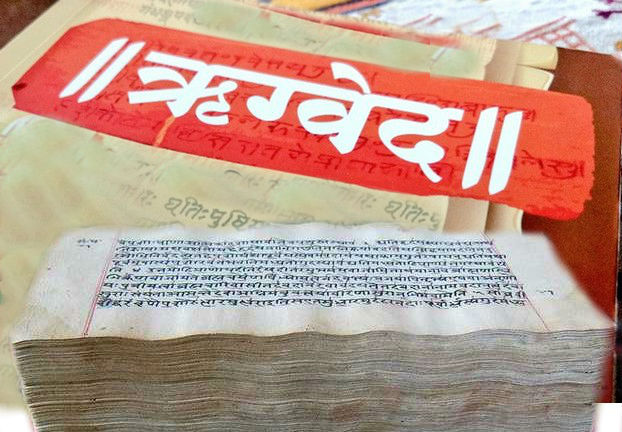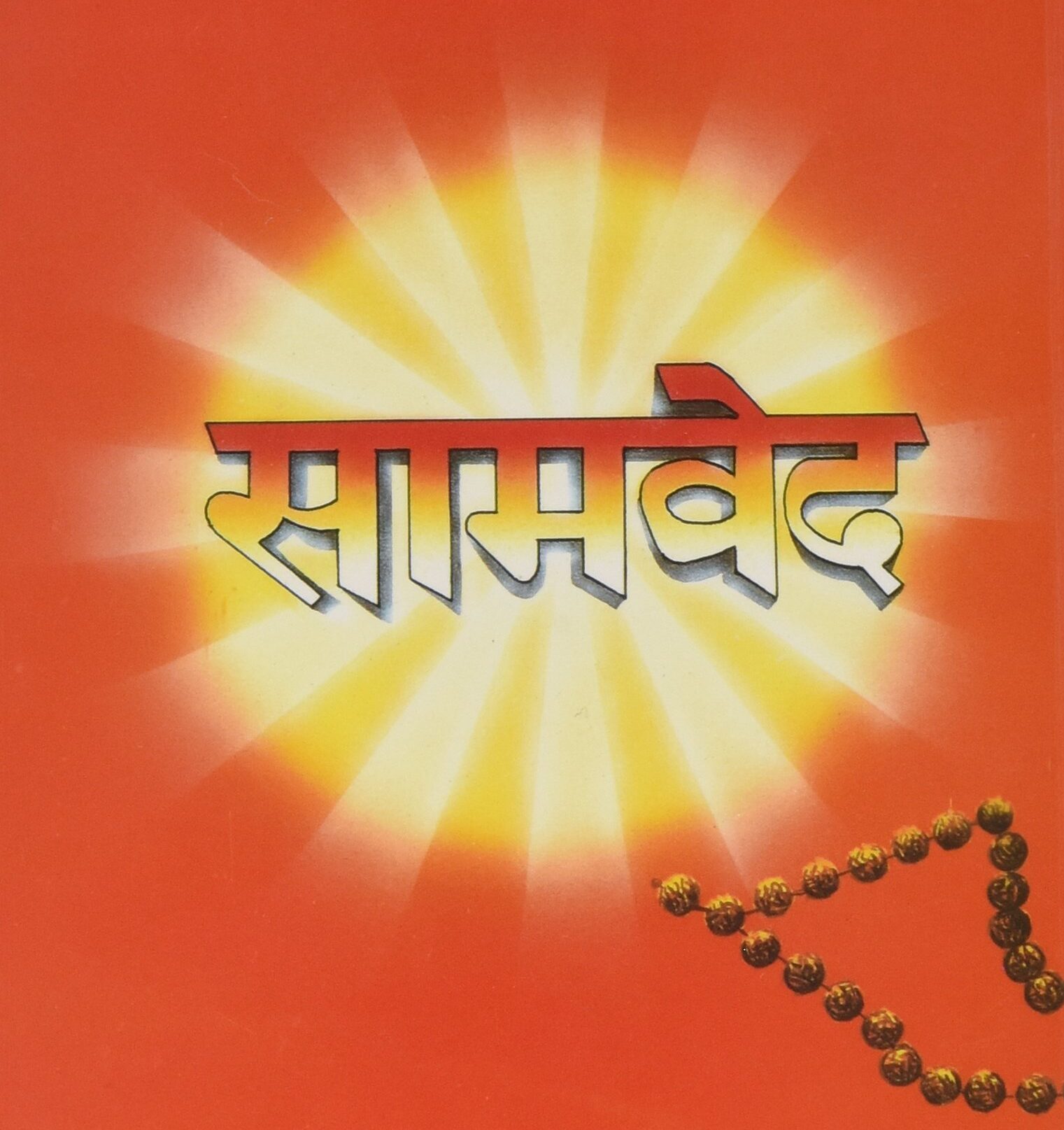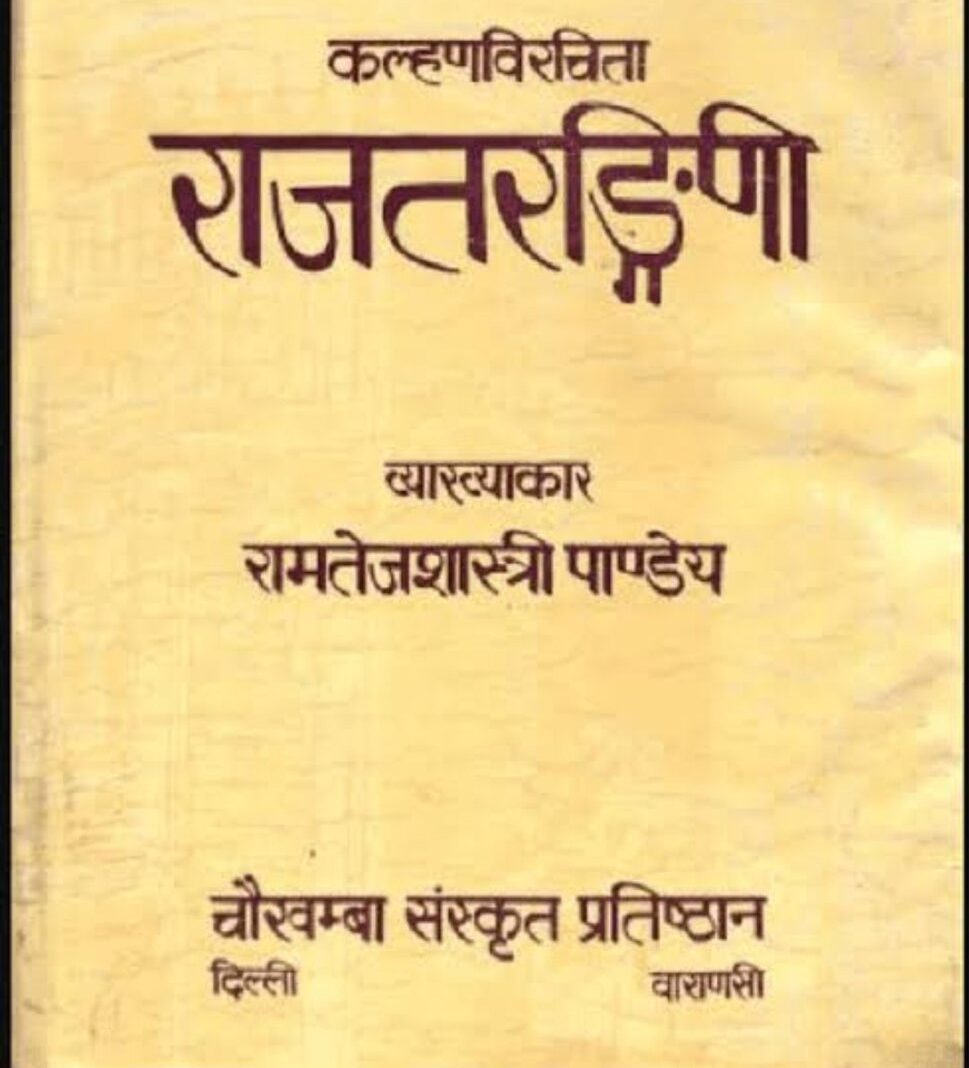The Vedas
The Vedas form the oldest literary works of the Aryans and occupy a very distinguished place in the history of the world literature. Vedas have been looked upon as the revealed words of God by millions of Hindus. In many centuries, Vedas had grown up and was orally handed down from generation to generation. The Vedas were probably authored during 1800 BC and 600 BC. It consists of three successive classes of literary production.
These three classes are:
- The Samhitas or Mantras—these are collections of hymns, prayers, charms, litanies, sacrificial formulas.
- The Brahmanas—a kind of Primitive theology and philosophy of Brahmanas.
- The Aranyakas and Upanishads—they are partly included in the Brahmanas or attached thereto and partly exist as separate work. They contain philosophical meditations of the hermits and ascetics on the soul, God, world & man.
There are four Samhitas which are different from one another.
The Rigveda Samhita

A collection of hymns. It has ten mandalas with a total of 1028 ‘Suktas’ or ‘stutis” for the worship of gods like Indra, Surya, Agni, Yama, Varuna Ashwini, Usha, etc.
Samaveda Samhita

A collection of songs mostly taken from Rig Veda. It contained 1549 stutis. A special class of priests known as “Udgator” was to recite its hymns.
Yajur Veda Samhita

A collection of sacrificial formula. It has 40 mandals. There are two distinct forms of Yajur Veda namely. “Sukla Yajur Veda” and “Krishna Yajur Veda”. The “Sukla Yajur Veda” contains the genesis while the “Krishna Yajur Veda” describes the “Vasya” or the philosophy.
Atharva Veda Samhita

A collection of songs and spells. It has twenty mandalas with 731 ‘stutis’. It deals with magic, hypnotism, enslavement through mantra. It is regarded on a lower level than the other three Vedas. These four Samhitas formed the basis of four Vedas.
Every work belonging to the second and third classes of Vedic literature viz, the Brahmanas, the Aranyakas, and the Upanishads, is attached to one or another of these Samhitas and is said to belong to that particular Veda.
The Authorship of the Vedic Literature
The Hindus have a belief that the hymns were merely revealed to the sages and not composed by them. .For this Vedas are called “apaurusheya’ (not made by man) and ‘ritya” (existing in all eternity). The ‘Rishis’ to whom they are ascribed are known as Mantradrasta’. (Who received the mantra by sight directly from the Supreme Creator).
Vedangas
Besides the Vedas, there is another class of works whose authorship is ascribed to human beings. They are known as Sutras or Vedangas. There are six Vedangas. They are six subjects. These are siksha (pronunciation), changes (meter) Jyotisha (astronomy), Kalpa (ritual), Vyakarana (grammar), Ninukta (explanation of words).
Puranas

Among various sources used in the reconstruction of early Indian history, Puranas enjoy a place of great significance. Puranas are 18 in number and these were composed over a long period beginning from 2nd Century B.C. to 10th Century A.D. The Puranas provide information about both the secular & religious life of ancient age. Their significance was immense as a source of spreading secular knowledge among the people.
The Puranas divide subject matter into 5 parts which are-
- Sarga – Rise
- Prati Sarga – Fall of dynasty
- Manavantra – Repetition of time
- Vamsa – Family / Genealogy
- Vamsanu Chanta – Dynastic history
Puranas have elements of historical work because the information is provided chronologically. The name of various kings & successors is given in chronological measure. Puranas deal with social life, morality, religion & philosophy. They also provide information about the distance between various places, Indian geography known to early Indians, various methods used for measurement of distance & time, etc. Some of the Puranas deal with specific dynasty-
- Vishnu Purana – Mauryan dynasty
- Matasya Purana – Satvahna dynasty
- Vayu Purana – Gupta dynasty
In the Ancient Age, the Puranas were the only important literacy work accessible to women & shudra. The Vedas were not accessible to them because of this Purana propagated knowledge among the majority of the Indian population. According to Banabhatta, Puranas were read public in ancient times & the entire village use to loosen them that is why Puranas was considered as most important of spreading secular knowledge among people during ancient age.
Kalhana’s “Rajatarangini” (1149AD)

Kalhana was a Kashmiri historian in 1200 Century AD. He wrote “a famous historical work named “Rajatarangini”. This book contains a history of India beginning from 8th Century BC Mahabharata Age to the middle of 12th Century AD In this book Kalhana expressed attribute of a true historian & true historical work.
According to Kalhana, a true historian shall examine various available works of previous writers critically, so that a truthful picture of the past could be reconstructed. According to Kalhana, a true historian shall have a detached mind. Historians should not get involved in the details emotionally. His task is not to interpret the past as good or bad. His responsibility is to present the past as it is.
A true historian should be without any prejudice/bias. Interpretation of the past shall be uncolored without distortion. Historians should interpret the past in light of present socio-culture, admin-political, and economic life. So that the knowledge of the past could be applied by people in their present life.
By reading true historical work, the picture of the past should appear in front of the reader. True historian work contains lessons for the future. By studying the history of previous people, wise people should be in a position to foresee the future. A true historian must not incorporate personal values and beliefs in his works.

